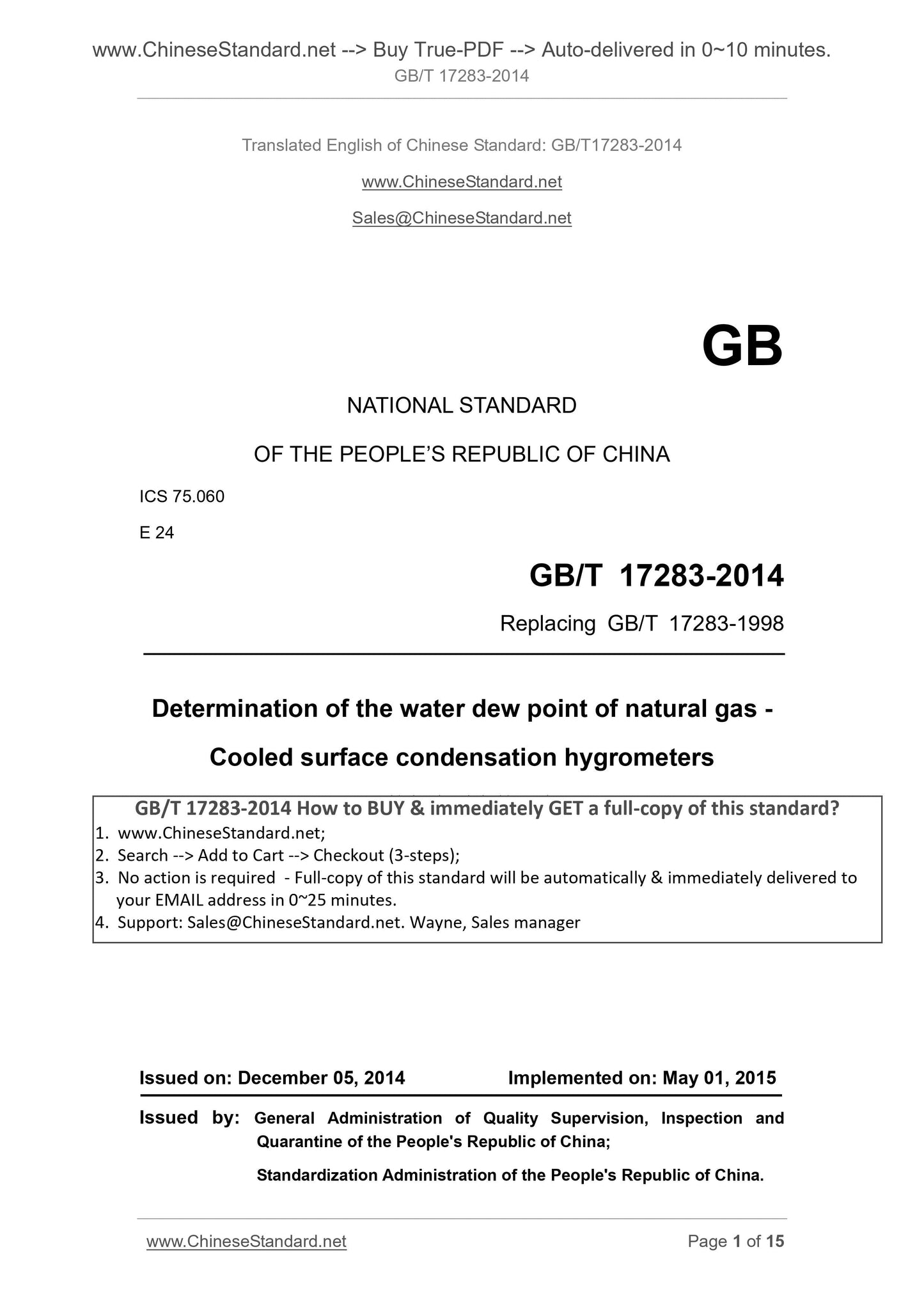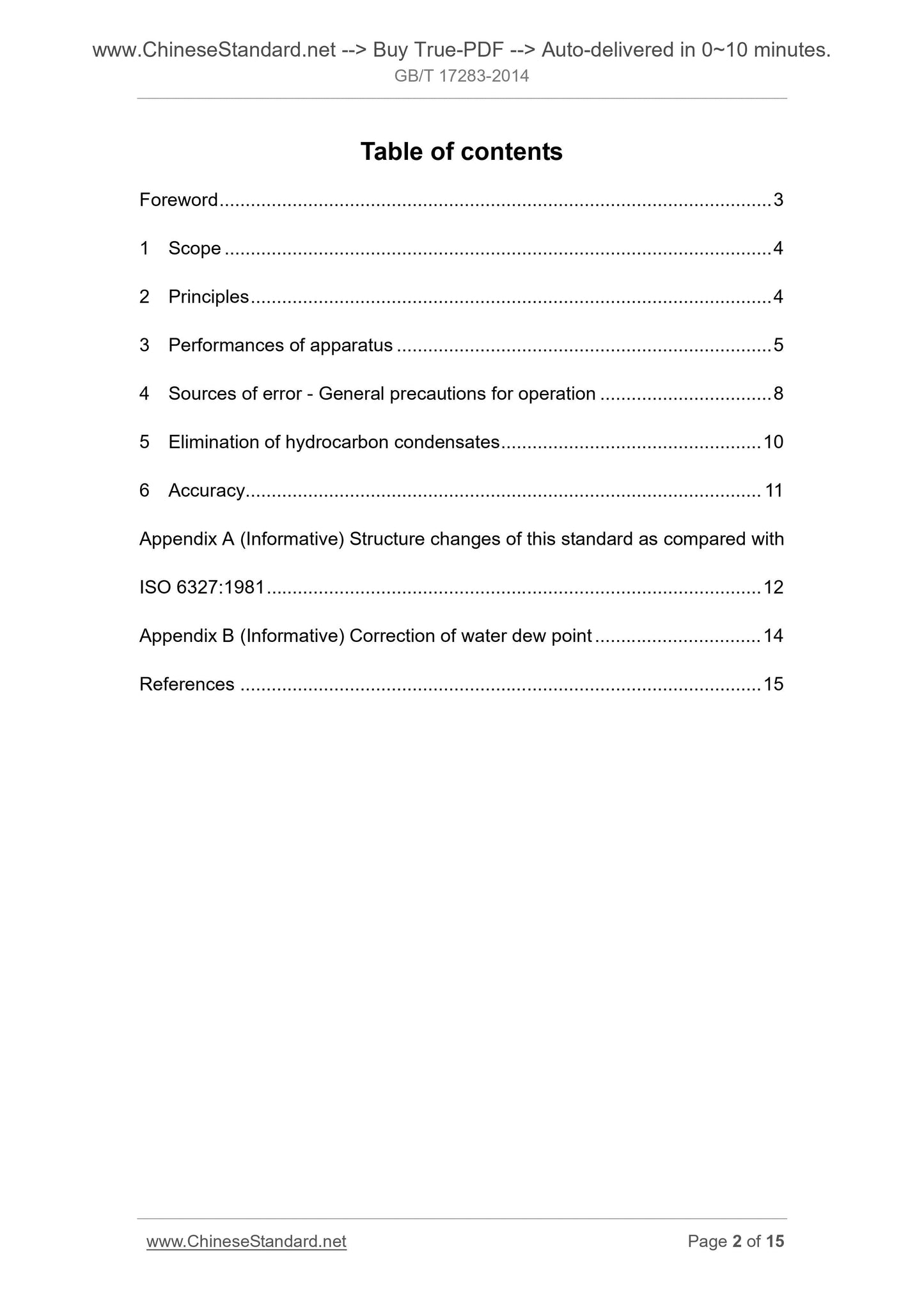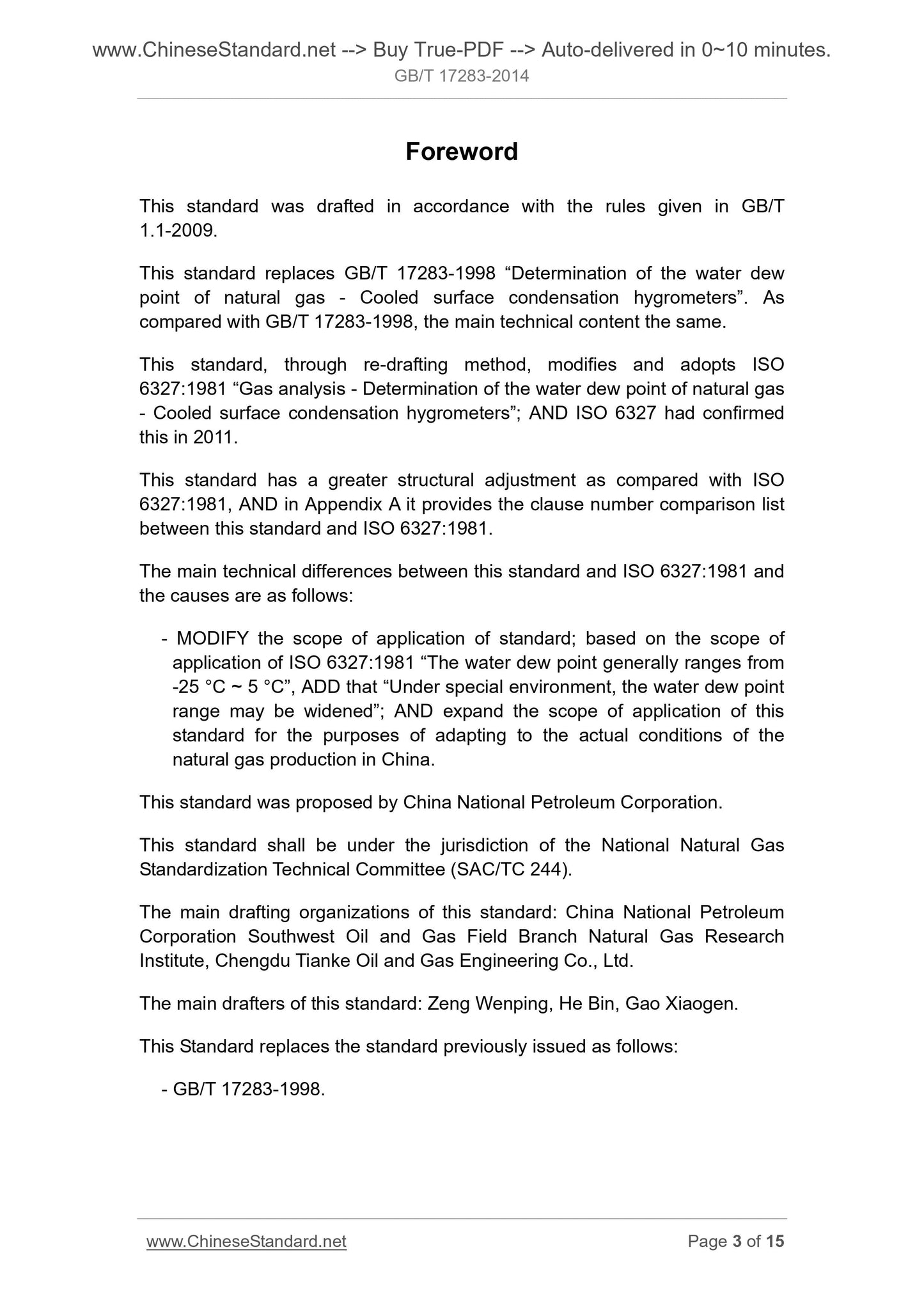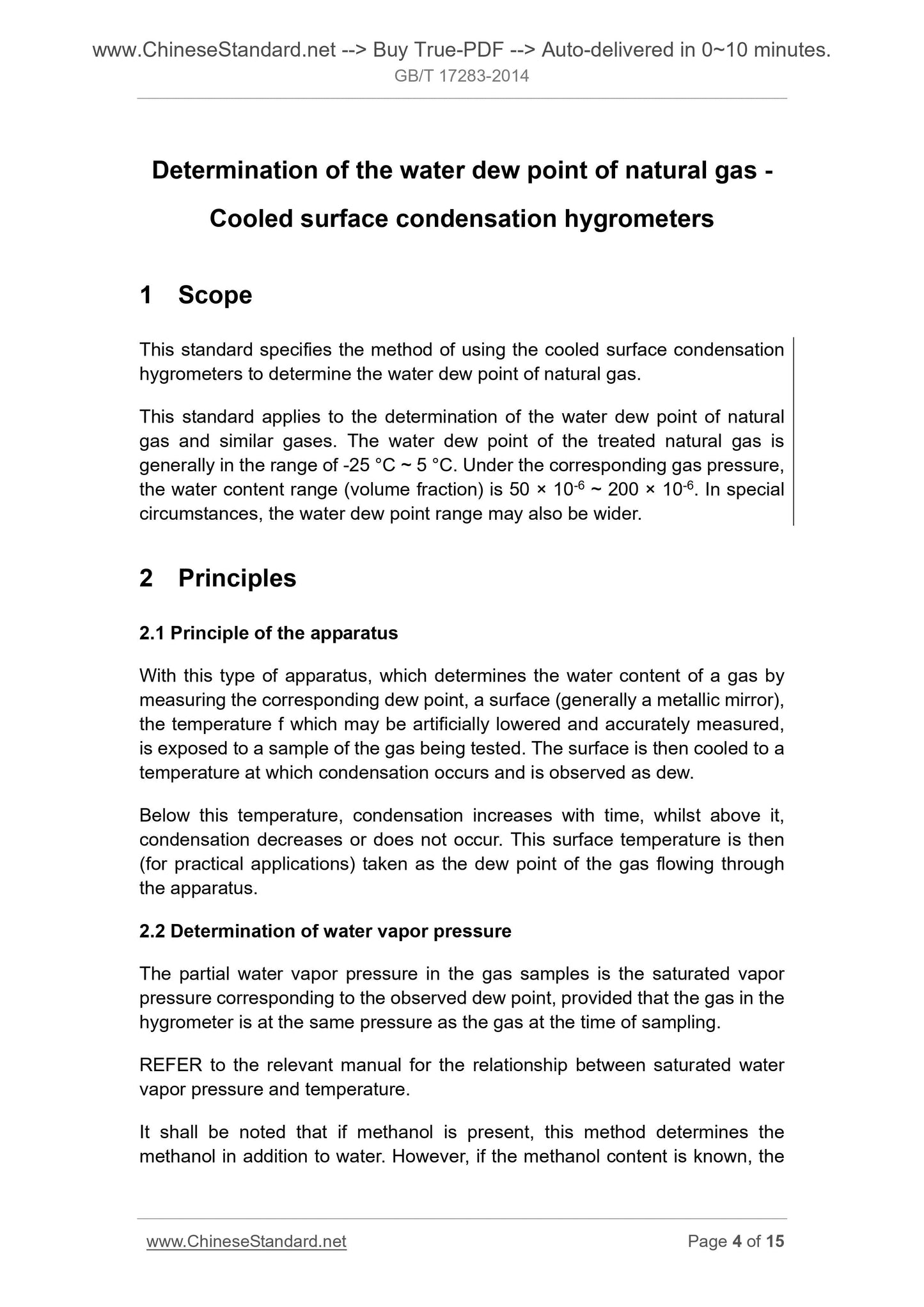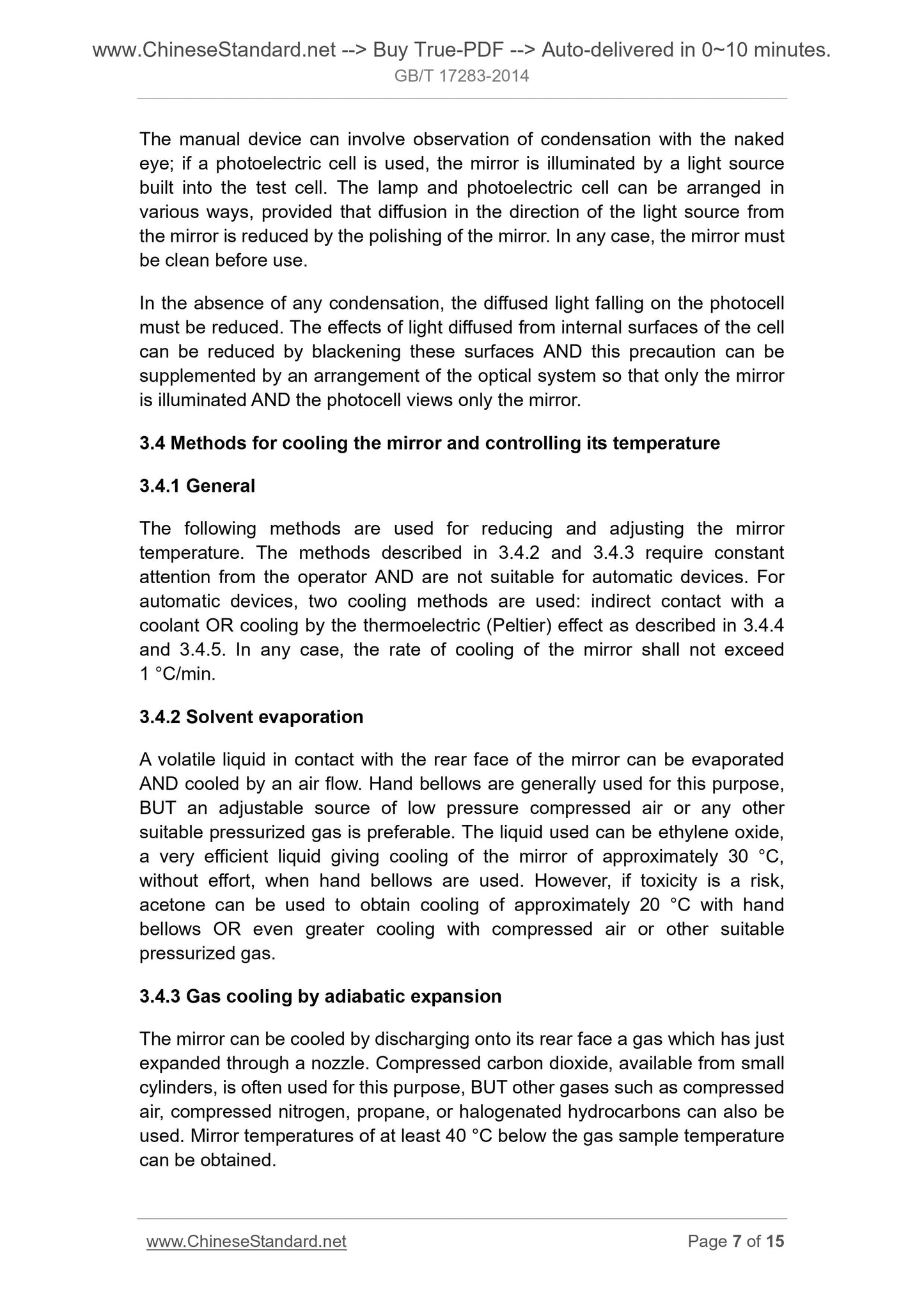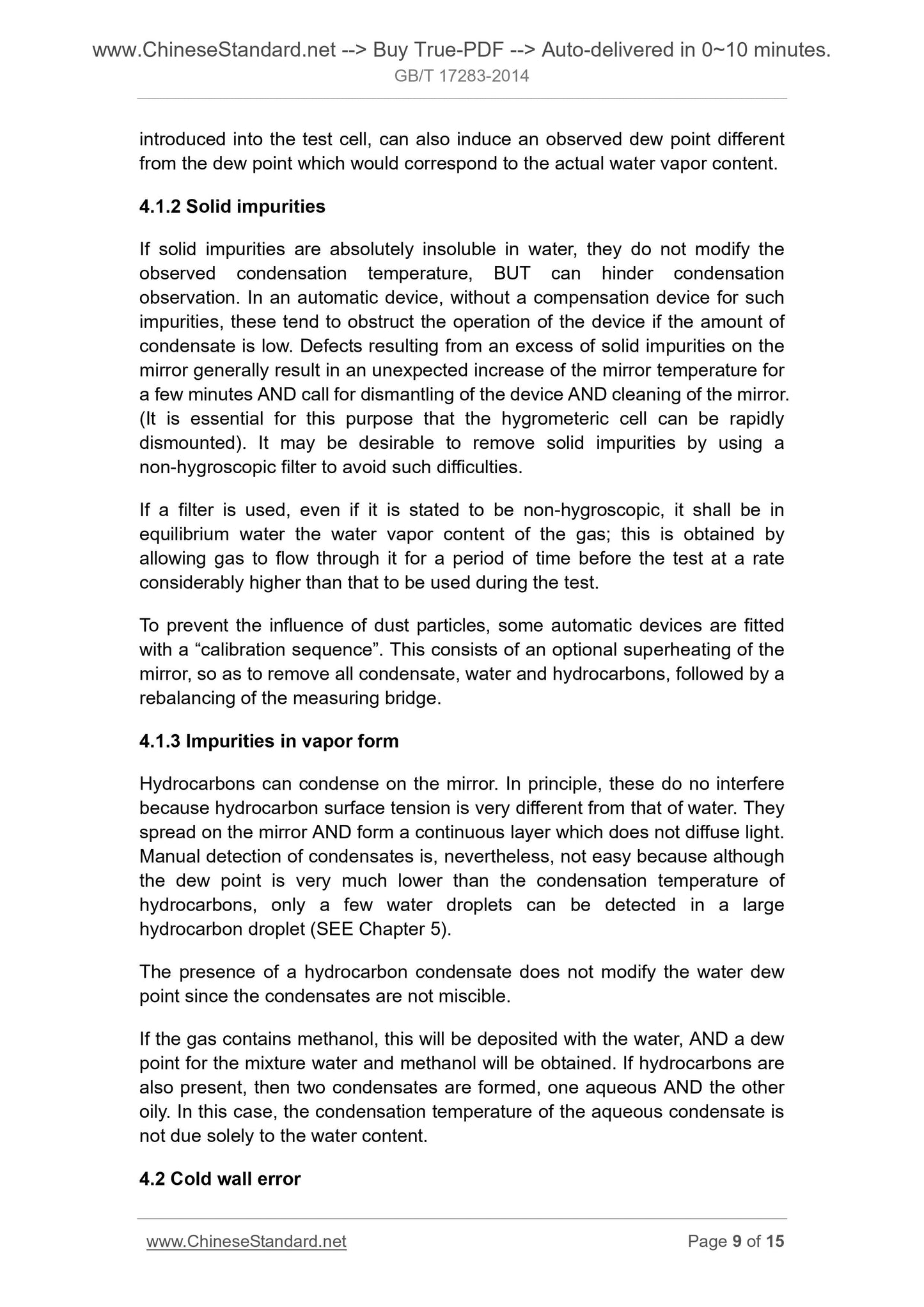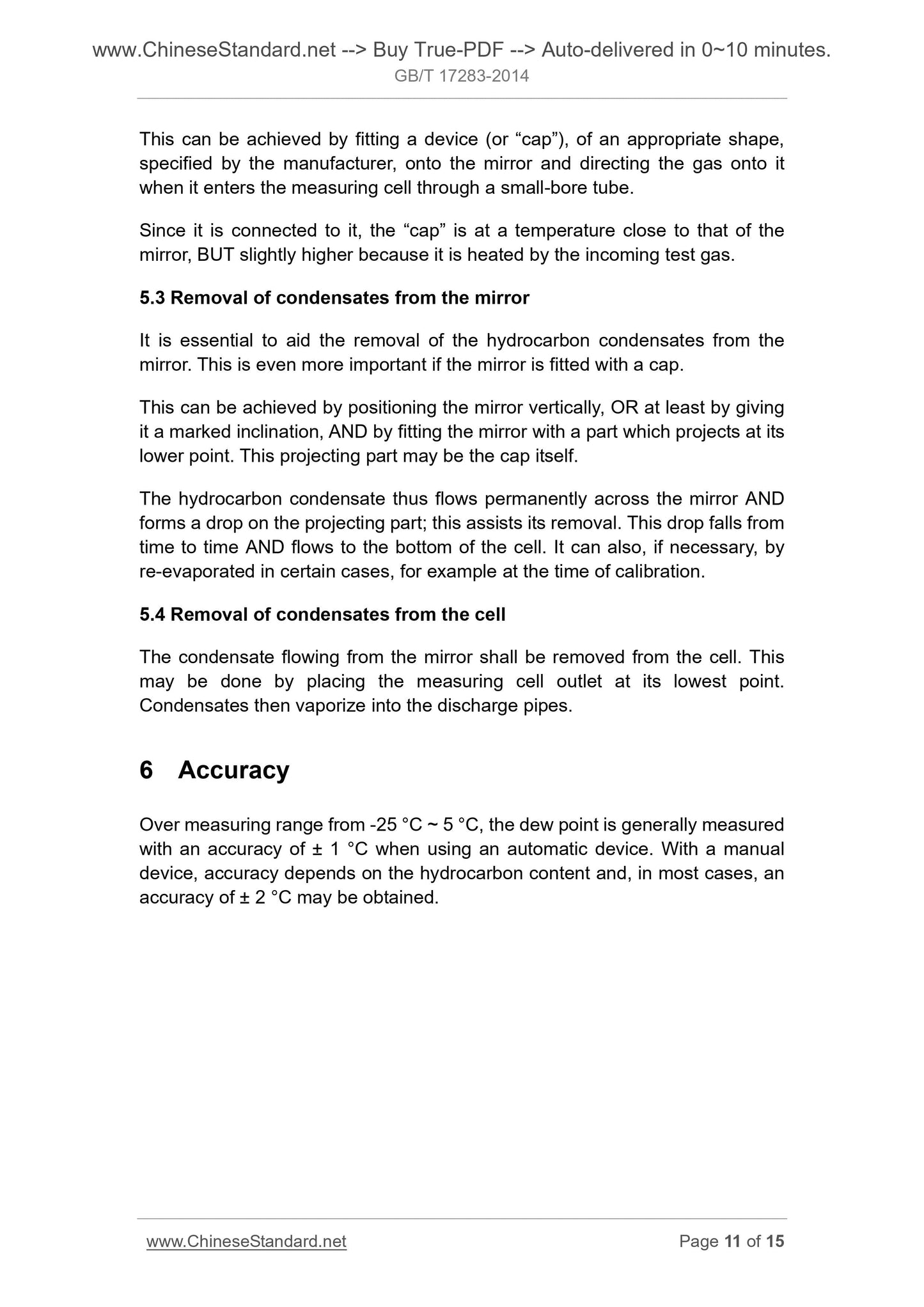1
/
of
7
www.ChineseStandard.us -- Field Test Asia Pte. Ltd.
GB/T 17283-2014 English PDF (GB/T17283-2014)
GB/T 17283-2014 English PDF (GB/T17283-2014)
Regular price
$130.00
Regular price
Sale price
$130.00
Unit price
/
per
Shipping calculated at checkout.
Couldn't load pickup availability
GB/T 17283-2014: Determination of the water dew point of natural gas -- Cooled surface condensation hygrometers
Delivery: 9 seconds. Download (and Email) true-PDF + Invoice.Get Quotation: Click GB/T 17283-2014 (Self-service in 1-minute)
Newer / historical versions: GB/T 17283-2014
Preview True-PDF
Scope
This standard specifies the method of using the cooled surface condensationhygrometers to determine the water dew point of natural gas.
This standard applies to the determination of the water dew point of natural
gas and similar gases. The water dew point of the treated natural gas is
generally in the range of -25 °C ~ 5 °C. Under the corresponding gas pressure,
the water content range (volume fraction) is 50 × 10-6 ~ 200 × 10-6. In special
circumstances, the water dew point range may also be wider.
Basic Data
| Standard ID | GB/T 17283-2014 (GB/T17283-2014) |
| Description (Translated English) | Determination of the water dew point of natural gas -- Cooled surface condensation hygrometers |
| Sector / Industry | National Standard (Recommended) |
| Classification of Chinese Standard | E24 |
| Classification of International Standard | 75.060 |
| Word Count Estimation | 15,155 |
| Date of Issue | 12/5/2014 |
| Date of Implementation | 5/1/2015 |
| Older Standard (superseded by this standard) | GB/T 17283-1998 |
| Adopted Standard | ISO 6327-1981, MOD |
| Regulation (derived from) | Announcement of Newly Approved National Standards 2014 No. 27 |
| Issuing agency(ies) | General Administration of Quality Supervision, Inspection and Quarantine of the People's Republic of China, Standardization Administration of the People's Republic of China |
| Summary | This Standard provides a cooling surface condensation hygrometers method for the determination of gas water dew point. This Standard applies to natural gas and similar gas water dew point measurement. The treated water dew point range pipeline gas is gene |
Share
